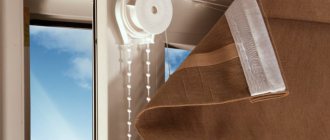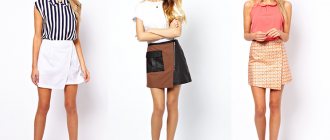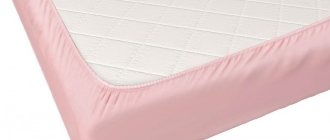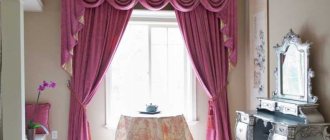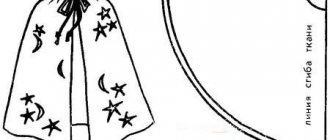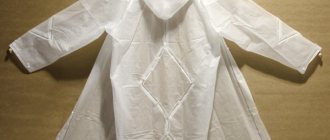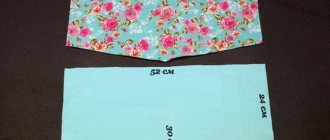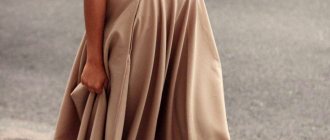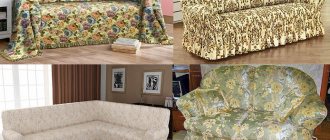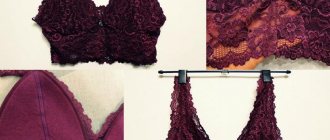Peculiarities
Puffs are tucks and folds in the fabric, made in the form of non-standard drapery methods. The result is textile compositions with a touch of luxury and exquisite romanticism. They are appropriate in the design of bedrooms for women or married couples, in the decor of formal offices or formal living rooms.
The technique that allows you to sew puffs on curtains comes from France, where it was first used by local needlewomen. Its essence is revealed in the translation of the word bouffer, meaning “to blow up.” From the very beginning, these lush elements were used to decorate the clothing of noble people. A little later, with the coming to power of Louis XIV, puffs began to be used to decorate luxurious rooms. And today anyone can sew ruffles on curtains.
Flounces on curtains are most often sewn from the inside of the fabric, only some elements are made from the front. At the same time, in order to get an intricate ornament, be sure to adhere to the pattern according to which the stitches are made.
This design method allows you to assemble lambrequins and puffs into artistic folds, which gives the room a festive, even slightly theatrical atmosphere. Large puffs make a pompous impression and are suitable only for rooms decorated classically. A tall window decorated with long floor-length curtains is considered ideal. If the window is decorated with small folds, then they are also appropriate in small spaces.
Types of buffs
There are 2 types of buffs:
- factory production;
- done independently.
They are often ordered in specialized workshops from professional seamstresses. Manual work requires much more time, perseverance and experience of the master, but the result often exceeds all expectations!
Puffs made in the factory using a sewing machine are made much faster, and also look good, but lack the bright individuality and soulfulness that goes into the design of the fabric by hand.
The following buffet configurations are distinguished:
- Diamond.
- Pigtail.
- Basket.
- Embroidery in Hungarian.
- Zigzag.
- English folds.
- "Waffle Pie"
- Flower, etc.
The name of the method of creating a puff corresponds to the shape of the fold, which is obtained after manipulating the thread and needle.
Buff manufacturing process
- Selection of a suitable ornament and drawing. A pattern diagram is drawn on A4 paper, which consists of dots and arrows. Arrows are usually needed to indicate the direction of thread tension.
- Before transferring the design onto the fabric, the curtains from which the puffs will be made are ironed, then laid out face down on a large hard surface. Then the diagram is transferred from paper to the material. To correctly mark the points, it is better to use a ruler.
- Using a thick needle, pierce the fabric at points so that they are exactly in the middle. When inserting the needle into the first point, a small tail 3-4 cm long is left. From there, the needle and thread are pulled to the second point and threaded.
- Then the thread is pulled in the direction of the arrows so that the first and second points are connected and a curly fold is formed. The thread is cut.
- The fold (tuck) is fixed by tying both ends of the thread into several knots.
- In this way, each fold is sewn separately in order.
- Work continues until the last tuck is fixed.
- On the outside of the fabric you will get a beautiful puff with airy fancy folds.
You may also be interested in: Patterning and sewing a “butterfly” lambrequin with your own hands
When choosing, you can collect folds along the top and edges of the curtains or along the edges and in the middle. When making decorative folds using a sewing machine, a narrow ribbon is sewn from the wrong side of the fabric, which is then pulled together. The disadvantage of machine sewing is the limited choice of patterns.
Video of sewing a “flower of Thailand” puffer:
It is important to know that the puffs can be pulled together both from the wrong side and from the front side. To hide the seam connection points, these places can be decorated with various accessories (decorative buttons, beads, pearls, etc.)
Execution algorithm
Types of puffs for curtains, including embossed and very complex ones, require patience and strict adherence to the drawing from the artist.
The general algorithm of actions includes the following steps:
- Selecting a pattern scheme.
- Transferring the ornament to the fabric (from the back or face).
- Arranging conditional points, piercing them with a needle and strong thread (this process requires care so that marks are not visible from the face of the fabric).
- Pulling the threads in a certain order, according to the schematic drawing.
Folds in the fabric are obtained by using a special curtain tape sewn to the fabric and then properly pulled together.
Helpful advice: it is advisable to decorate the connection points of machine or hand stitches with rhinestones, beads or pearls.
Fabric selection
To get puffed curtains for the kitchen or other rooms, you need to choose the right fabric. The best effect of folds pulled together into an ornament is obtained on a knitted fabric that has the property of stretching well.
The shade of the fabric must match the interior design of the room.
The type of textile is chosen depending on the functional purpose. Synthetics are suitable for the kitchen, they are easy to wash and require almost no ironing. For bedrooms, living rooms and offices, it is advisable to use noble fabrics that create a sophisticated atmosphere of discreet luxury.
Lambrequin puffs, created from mother-of-pearl or metallized fabric, emphasize the luxury of the furnishings and the design of the room. To make the fabric sparkle interestingly in the sun, choose lurex fabrics with lush folds. But in the case of plain fabrics of modest tones, it is better to sew small puffs that do not create the impression of crumpled fabric.
In some interiors, curtains with puffs in colors contrasting with the main decor of the window look attractive and unusual.
Choosing fabric for puffs
Before sewing curtains with puffs that match the interior of the room with your own hands, you need to choose the fabric wisely. The material depends on the room where the product will hang.
Very beautiful puffs are made from knitted fabrics that stretch well and fold beautifully. This type of fabric is suitable for the kitchen and small spaces.
It will also be interesting: We sew a curtain with a drawstring with our own hands - pattern, photo instructions
For the kitchen it is also recommended to use synthetic fabrics that are easy to wash. For large halls, puffs made of organza, silk, and tulle are suitable. As a rule, plain fabrics or small patterns are chosen for them, harmonizing or contrasting with the color of the curtains and the entire room as a whole.
Rich and noble fabrics are selected for living rooms and offices. Lambrequin puffs made of shiny or transparent fabric with shine add luxury and sophistication to the rooms.
In formal offices, as a rule, plain fabrics of strict colors are used, the folds are made small, without bulkiness. Curtains with lush puffs made of lightweight fabric with lurex or mother-of-pearl make the room light and cheerful. Such curtains are suitable for a child’s or young girl’s room. When heavy fabrics are used for puffs, special fillers are required to support the shape of the folds, which are made from sewing paper, padding polyester or pieces of thick fabric.
Hand-sewn curtains with puffs look especially ideal in rooms with a classic interior: walls with silk wallpaper, decorated with gilded monograms, massive furniture made of expensive wood. Curtains with frills made of light, airy fabrics are suitable for Art Nouveau rooms. If the goal of the work is to give the room elegance, it is better to choose puffs with a simple, unpretentious pattern; to emphasize the luxury of decoration - lush, with glitter and gold.
Puffs in the interior
The best conditions for decorating a room with puffs are classically decorated rooms. They combine surprisingly harmoniously with silk-screen printing on wallpaper, monograms, lambrequins and expensive furniture wood. When used in rooms decorated in a modern style, they lighten the atmosphere and increase space.
Model for a room in a classic style
The main criterion: lush puffs give the room an aristocratic touch, while modest ones add elegance.
We sew puffs with our own hands
Any person with basic sewing skills and perseverance can sew puff curtains with their own hands.
Option I
Initially, it is important to define the concept: the puffs will be on a lambrequin or on a base canvas. If you decide to sew a lambrequin puff on a curtain tape, then you should stock up on the following tools for work:
- needle and thread;
- scissors;
- centimeter, long ruler;
- marker;
- curtain tape (wide and narrow);
- 2 pieces of fabric with different widths, which are calculated in a ratio of 1:3.
First, to sew a lambrequin puff with your own hands, the cuts on the sides of the fabric are processed. The puff tape is then sewn with the top seam to the top of a wide strip of fabric. Hem the bottom part of the larger fabric and beat it up 100 mm. The braid is sewn in this place (bottom seam).
A narrow piece of fabric is placed between the two seams and stitched with the missing lines so that the result is a lambrequin puff on the curtain tape in the form of a bulge. After this, the product is ironed and, by pulling the laces from the curtain tapes, beautiful folds are made. As you can see, it is possible to sew a lambrequin puff without experience!
How to quickly sew curtains with puffs
According to the author. In this master class I will tell and show you how to sew curtains decorated with puffs yourself. If you already have experience in sewing curtains using regular braid, it will not be difficult to sew such a curtain quickly and efficiently. If you have no experience, it may take a little more time to sew.
Well, let's get started. We will need:
1. Curtain fabric with a width equal to the length of the cornice, multiplied by a factor of 1.8 or 2, so that the puffs form beautiful folds.
2. Curtain braid no less than 6 cm in height and a length equal to the fabric consumption + 5 cm. That is, if, say, you have a cornice 1.5 m long, then we will take 2.7-3 m of fabric, respectively, 5 cm more braid.
The height of the fabric also matters here. The most common height of fabrics intended for sewing curtains is 2.8 m. For ordinary ceilings 2.5-2.6 m high, this will be enough. But if the ceilings are higher, then it is better to look for fabric with a height of 2.9 or 3 m.
If your fabric has a regular edge at the bottom, you will need to cut it off and fold the edge over. The bottom of my fabric is already treated with a factory weighting agent, so we begin work by hemming the side seams.
Some curtain fabrics shrink during heat treatment, so before cutting the fabric to height, it is necessary to iron it thoroughly, preferably with steam, if allowed by the manufacturer.
From the bottom edge of the fabric, measure the desired height of the curtain and add 36 cm for the puffs themselves and 1.5 cm for the hem.
Total 37.5 cm.
We cut off the excess.
We take the braid and on the side that will later be in a more visible place in the finished product, fold it inside out 1.5-2 cm and stitch it.
Don't forget to make fastenings in those places where the cords pass! This is necessary so that later when tightening the cords do not unravel.
We combine the top edge of the curtain and the braid, folding 1.5 cm of fabric under the braid.
Sew along the top edge.
At the end of the seam, we also bend the free, unfolded edge of the braid inward, but do not stitch it. We finish the seam with a regular bartack.
We measure down 15 cm from the top edge of our future curtain, mark and align the bottom edge of the braid with the resulting line, and secure it with pins.
Carefully place the second seam, being careful not to sew up the pockets for the hooks and the tightening cord. We attach it where the arrow points. In this case, at the top you get something like a scallop.
And we repeat again - from the second seam and combine the bottom of the braid with the resulting line.
This is what it should look like on the side:
The next seam requires attention. It’s better to also secure the already created ruffles with pins facing upwards, otherwise there is a risk of catching them when stitching. But we don't need it.
Now we sew below the middle cord, but above the pockets.
And we repeat the procedure again, but now we put 12 cm down from the last seam. And again we combine the bottom of the braid with the resulting line, and secure it with pins. At this stage, it would be nice to make sure that we haven’t made any mistakes in the calculations and that the curtain is exactly the height we need. If suddenly the size does not quite correspond to the required one, it is not too late to correct it by reducing/increasing the bottom fold.
Now from the side our design looks like this:
The last seam remains - along the bottom edge of the curtain tape.
The result of our work:
All that remains is to bring beauty. We pull the cord threads from the free, unstitched end of the braid and tighten the fabric to the desired width (length of the cornice).
We do not cut off the excess ropes, but carefully tie them into a knot and tuck them in.
We straighten the resulting beauty, and you can hang the new curtain on the cornice.
Such curtains are suitable for almost any cornice configuration - round rod, plastic rail or profile.
Curtains with puffs can be made from thick fabric - satin, satin, light jacquards.
In addition, using the same technique you can sew curtain tiebacks or a decorative strip instead of a lambrequin.
I hope the master class will be useful for someone.
Source
